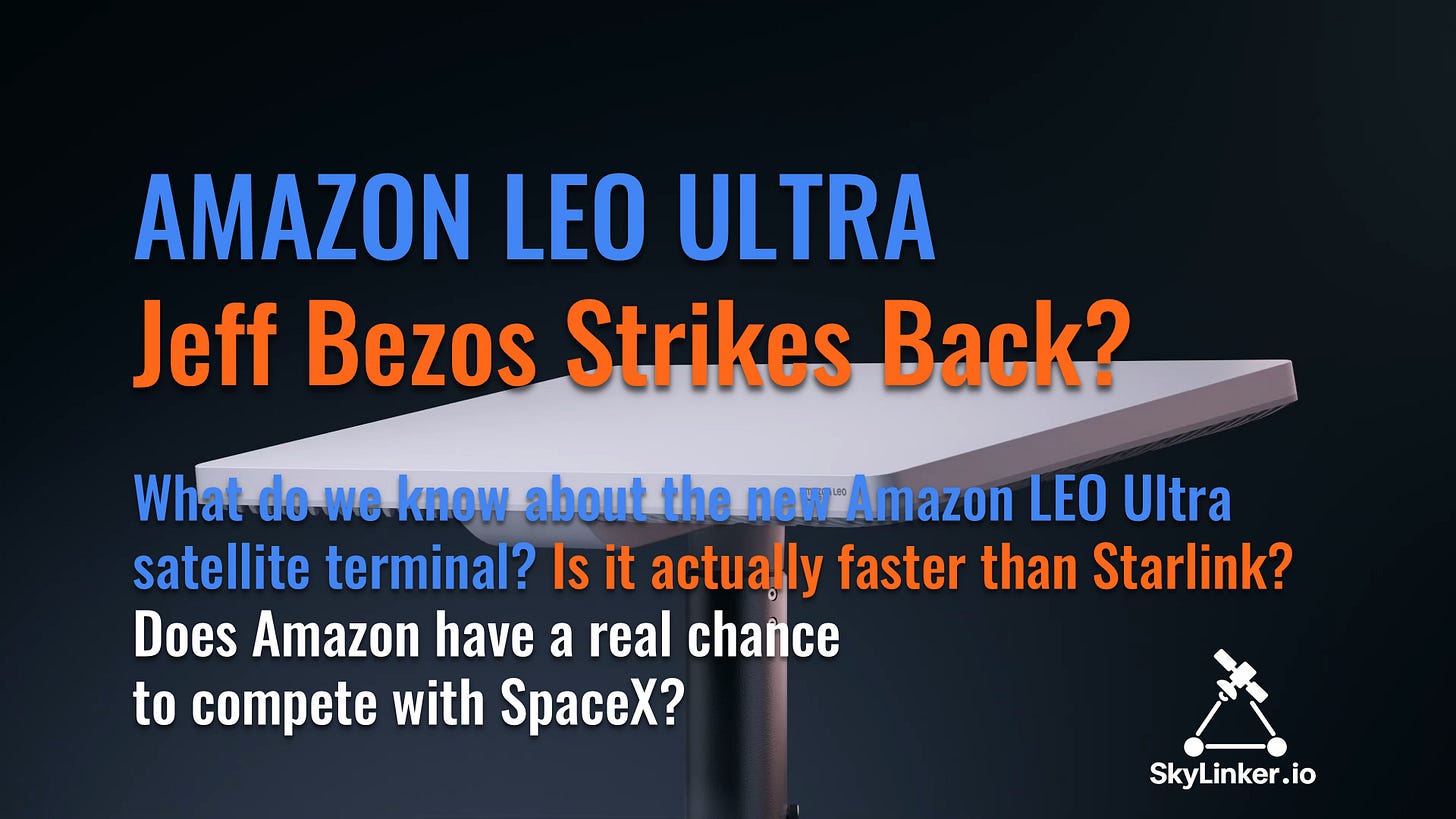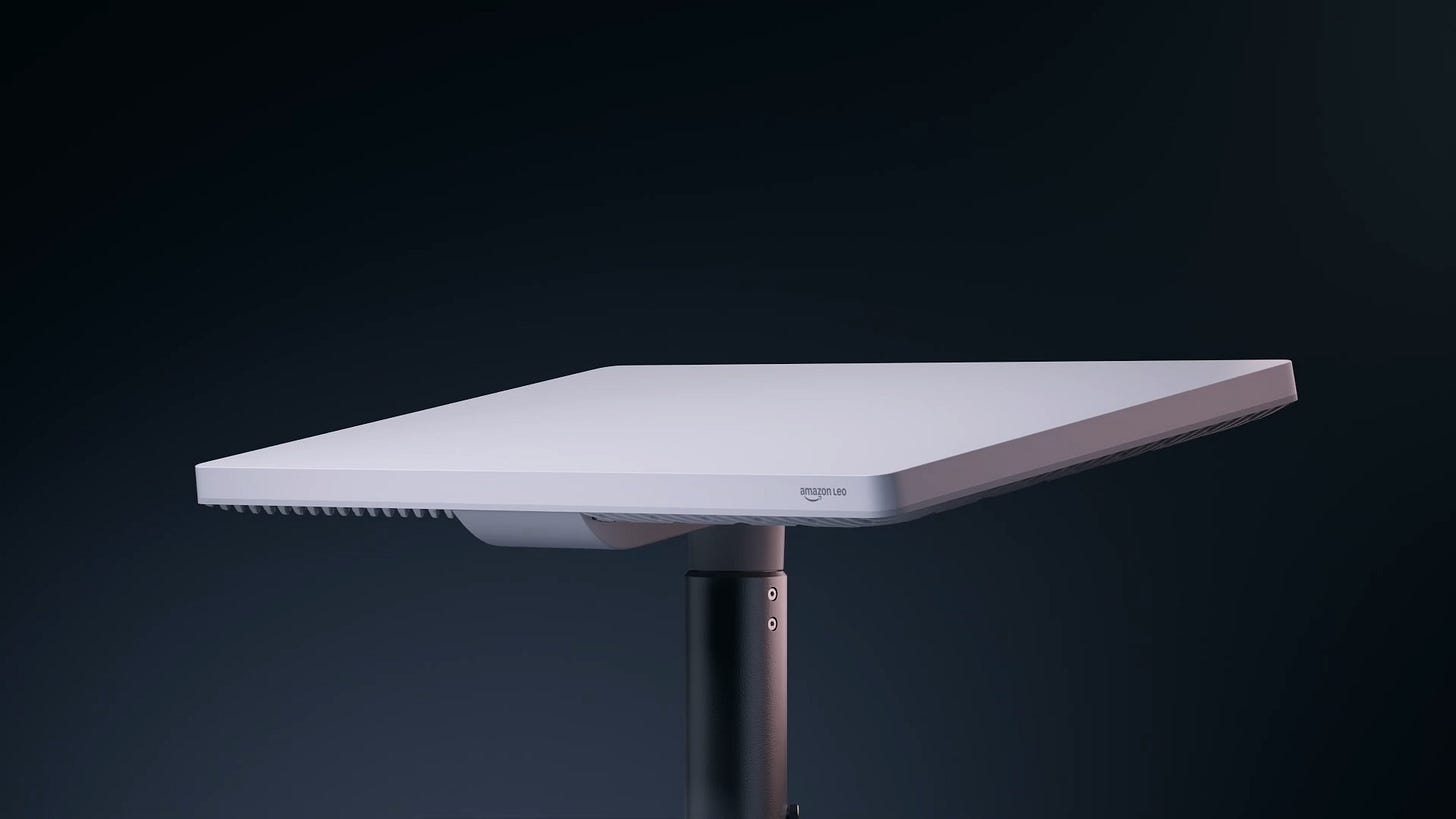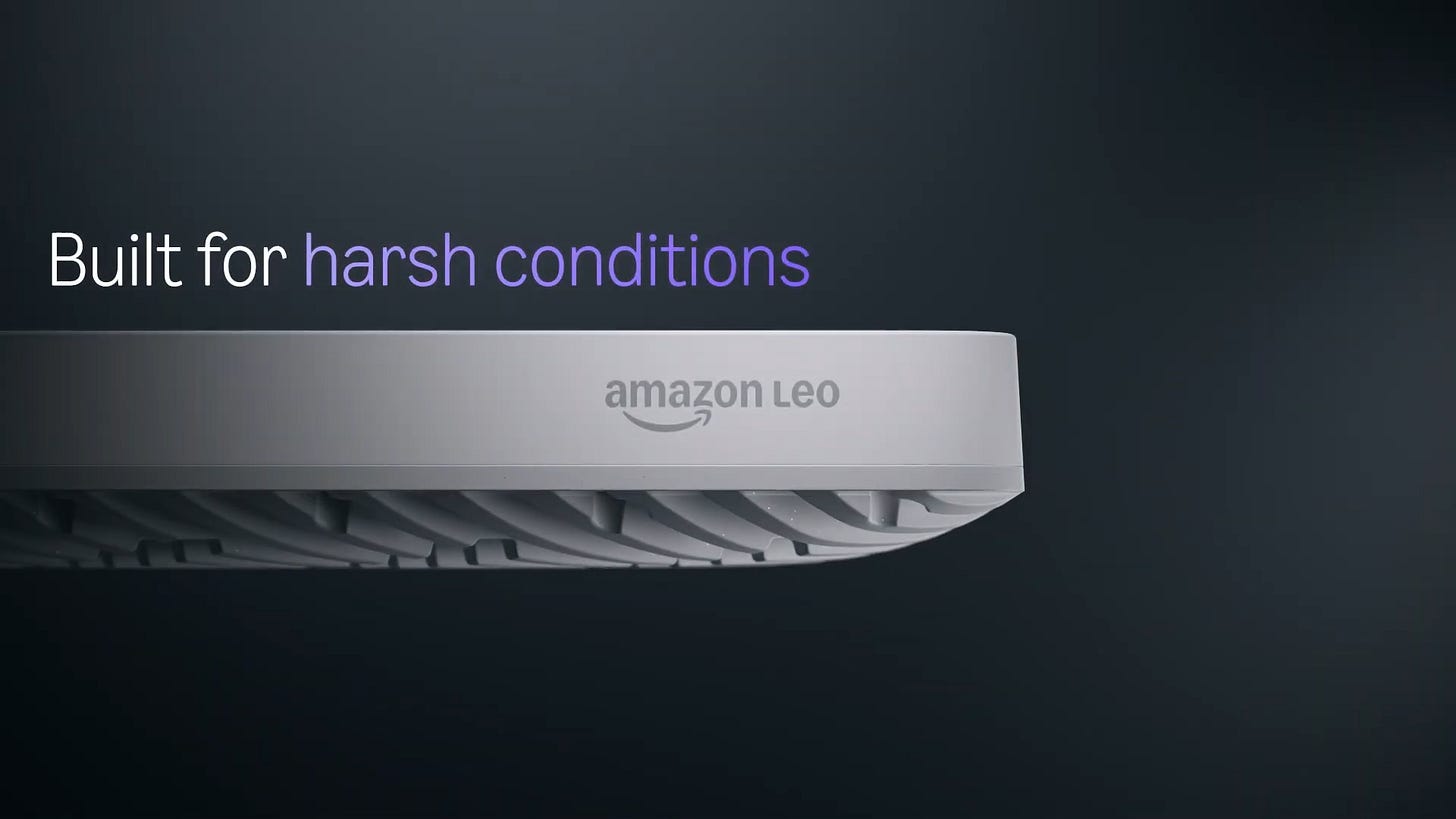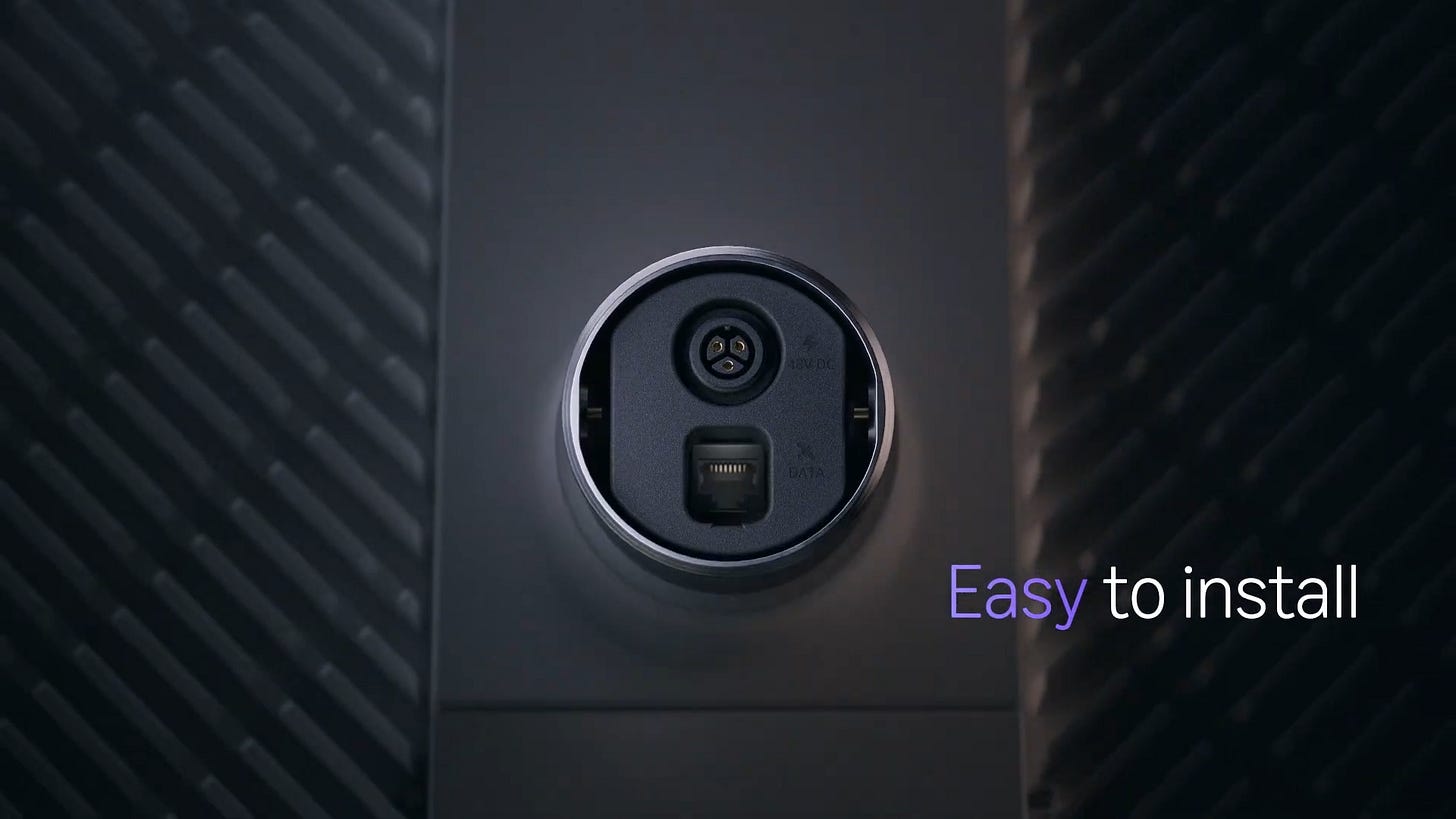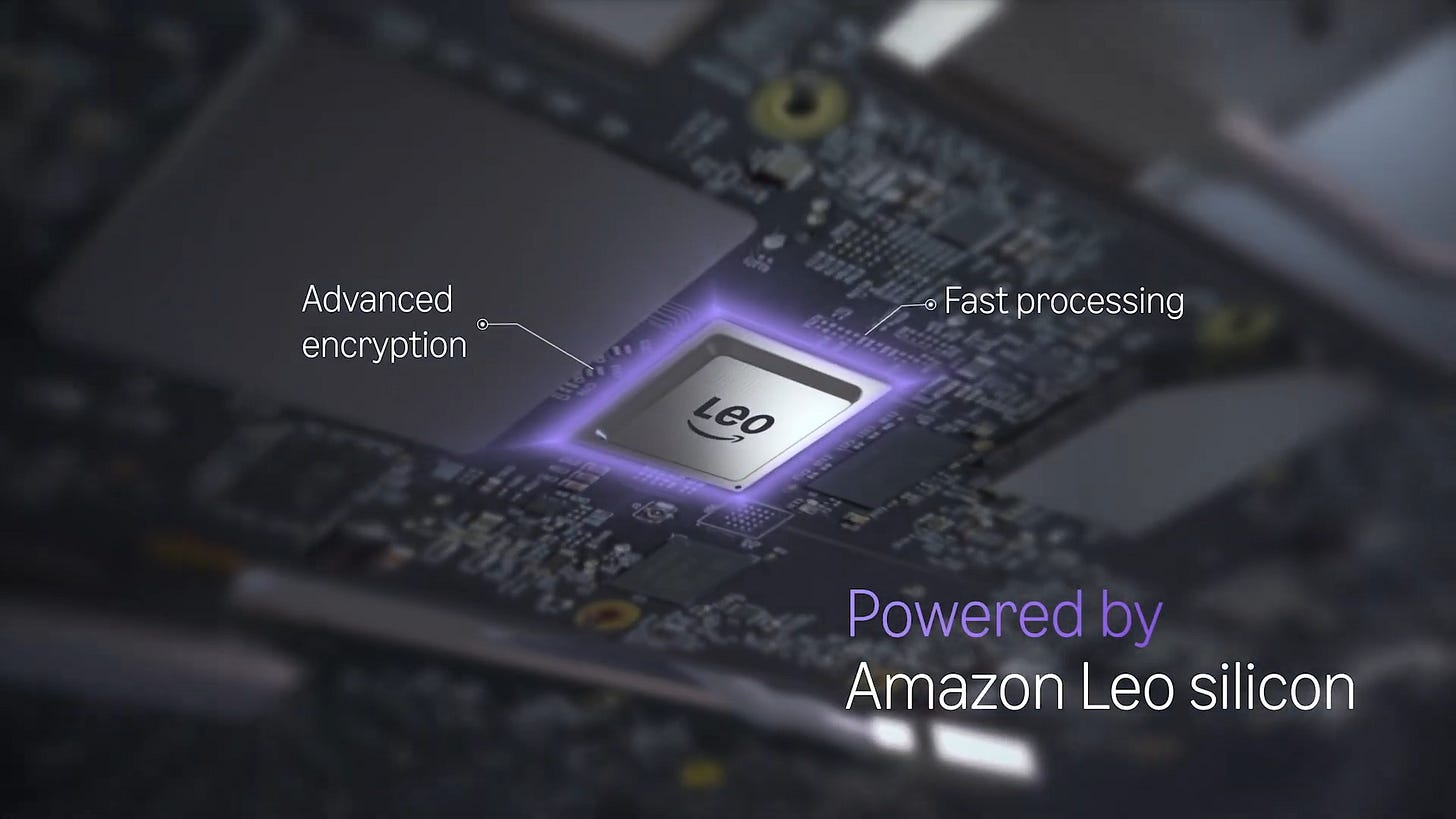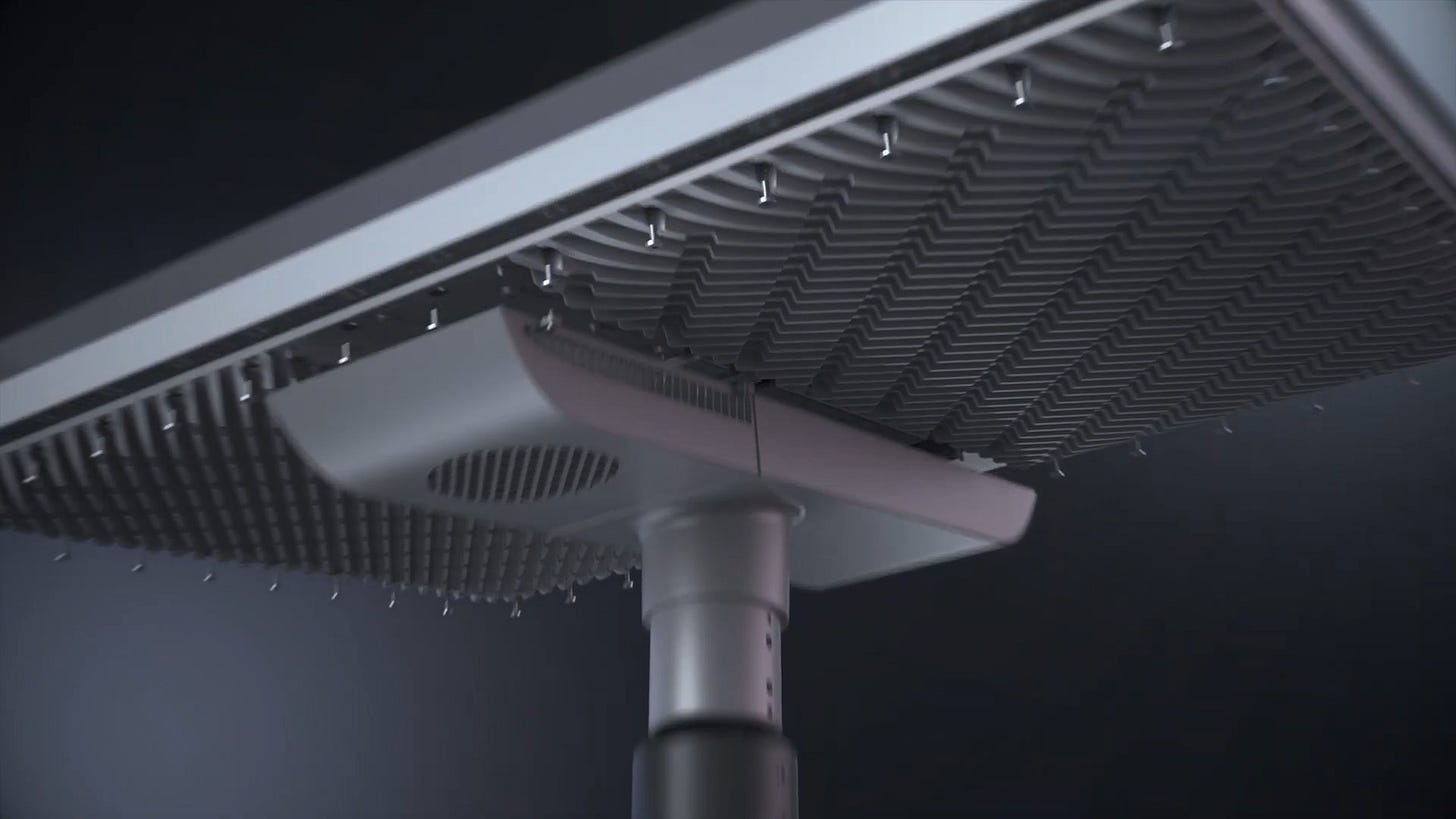Amazon LEO Ultra — Jeff Bezos Strikes Back?
What do we know about the new Amazon LEO Ultra satellite terminal? Is it actually faster than Starlink? Does Amazon have a real chance to compete with SpaceX?
Amazon has been dropping announcement after announcement — starting with the recently proclaimed rebranding of “Amazon Project Kuiper” into “Amazon LEO”, followed by announcements of new satellite terminals and today’s statement about the upcoming launch of a beta testing program.
Recently we published a detailed review of the available information about the L1LA10 router, which Jeff Bezos’ team plans to bundle with its Amazon LEO satellite terminals. Now it is time to analyze everything we know about the new Amazon LEO Ultra satellite terminal. In doing so, we will use the promotional video with renders of the terminal, as well as everything that has been accumulated lately and covered in our publications about “Amazon Project Kuiper – a deeper look” and in our detailed comparison of the Starlink, OneWeb, and Amazon LEO satellite networks.
Our goal is to leverage the experience of recent years and help our readers evaluate all available facts, draw attention to sometimes non-obvious details, and get ready to adopt new technological solutions in satellite communications in their own lives. But first and foremost — to support the defense of Ukraine against the armed aggression of Russian occupiers.
What Do We Know and What Do We Not?
Unfortunately, there are still no FCC documentation details specifically regarding the Amazon LEO Ultra terminal model. However, Amazon’s own announcement suggests that active work in this direction is clearly underway.
Therefore, all the information we have gathered and present below does not come from official sources and cannot be considered 100% accurate. Still, our experience of the past four years — primarily with Starlink — has taught us both how to properly analyze available details and how to read between the lines of promotional renders. ;)
Chassis and Mounting
Amazon LEO Ultra is an AESA-based satellite terminal, implemented as a rectangular monoblock with dimensions of 51 × 76 × 4.8 cm, with no moving parts or servo drives.
Rounded edges and a neat aerodynamic shape are combined with a smooth front panel and a ribbed metal lower section. In fact, the entire bottom part is a single massive cast heatsink with deep fins and channels for natural air convection — which is critically important when working with AESA technology, known for very high energy losses converted into heat.
Judging by the render, the mounting is provided by a pole-mount system with an insertable tube. The tube has an alignment key (groove) that prevents incorrect installation or rotation of the terminal. The antenna unit itself has a quick-lock mechanism for fast mounting.
The mounting system and chassis are supposed to withstand wind speeds of more than 100 m/s, although this has not yet been documented.
Ports
In a recessed bay under the antenna, hidden inside a protected pocket beneath the bracket, there are two ports:
A reinforced circular connector (3-pin) — industrial DC power input
A shielded Ethernet RJ45 — data port
Given the expected gigabit-class download speeds, which Amazon’s own tests have already confirmed, we should also expect the Ethernet RJ45 port to support corresponding throughput.
Chipset
Apparently, the rebranding affected not only the project as a whole, but also some key components. The chipset previously known to us as “ASIC Prometheus” now appears under the new name “Amazon LEO Silicon.” In essence, nothing changes — it is still a powerful platform chipset for the entire project, used both in satellites and in terminals.
Antenna
As for the terminal’s antenna, what we have here is clearly an AESA full-duplex phased array, which allows simultaneous transmission and reception of data. The corresponding user-facing speeds are expected to be:
Downlink: up to 1 Gbps
Uplink: up to 400 Mbps
According to earlier project documents in the FCC database, communication between the terminal and the satellite takes place in the Ka-band:
Downlink: 17.7–20.2 GHz
Uplink: 27.5–30.0 GHz
For the Ka uplink, FCC documents indicate an expected EIRP of 40–50 dBW. However, it will most likely be higher, within FCC-allowed limits — after all, Amazon LEO Ultra is intended for the enterprise segment.
We can assume that Amazon LEO Ultra, with a Ka-band uplink at 27.5–30 GHz, requires fairly powerful PAs. Given the large heatsink and the size of the rear module, we can reasonably guess the use of GaN RF modules in the 10–25 W range, with a total EIRP of 45–55 dBW. But at this point, this remains only an assumption.
Power and Consumption
On the other hand, considering the experience of other manufacturers, the render and images of the chassis suggest a thermal budget on the order of up to 300 W. Thus, we cannot rule out that Amazon LEO Ultra will not be the most energy-efficient satellite terminal on the market. The presence of its own industrial DC connector also implies the likely absence of built-in PoE++ or any similar solution.
Given that similar Amazon LEO Ultra-class parameters currently appear in aviation and maritime solutions, it is likely that this model will become the main “workhorse” for the corporate and government services segment.
Nearest Competitor
Accordingly, it is most accurate to compare Amazon LEO Ultra directly with Starlink Performance Gen3 — the latest version from SpaceX, positioned similarly in the market and offering quite comparable characteristics. Naturally, we will conduct such a comparison once we have more specific technical information — or, ideally, the actual terminals in our hands for practical testing.
From the information we already have, we can also expect trials of terminals for military and government agencies, which will differ by having a gray chassis.
The presence of an Ethernet RJ45 port without PoE++ creates a very interesting potential for using Amazon LEO Ultra terminals with a wide variety of networking equipment, without having to deal with the typical issues associated with Starlink. We will also discuss this topic in more detail once more information becomes available.
As we already wrote in our review of the new router that Amazon LEO Ultra terminals are supposed to ship with, Jeff Bezos’ team seems to be making a major bet on integration with IoT and AWS. This is, in fact, a perfectly logical step given SpaceX’s lack of activity in this particular area. However, this is by no means the only front where future competitive clashes between the giants of the LEO satellite industry will unfold.
I hope our review has been interesting and useful for you.
The support of paid subscribers of SkyLinker.io will allow us to share even better and even more independent analytics, interesting reviews, and produce training and educational materials. From an inexpensive subscription costing a few cups of coffee per month to a more significant “Patron” level — all of this is clearly and qualitatively converted into information and knowledge, primarily for the defenders of Ukraine.
All the most interesting things from the world of communication and space technologies are also available in the form of educational audio podcasts and video lectures both on the website and on the SkyLinker Youtube channel.


